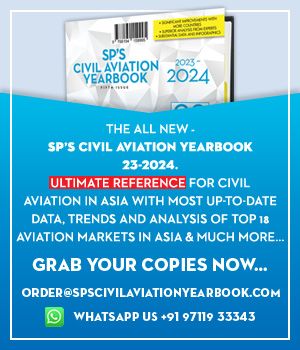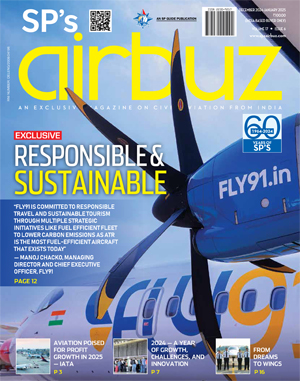Airlines - The Volatile Glamour

The declining prospects of employment in the airline industry are reflected in the 30 per cent drop in the issue of CPLs in 2010 to 1,282 and to 855 in 2011. How the recently approved foreign direct investment by foreign carriers will alleviate the plight of the Indian aviation industry is to be seen.
The year 2005 seemed surreal for civil aviation. Air Deccan’s success inspired new airlines to sprout and grab market share in low-cost air travel. GoAir, SpiceJet, Paramount and Kingfisher Airlines commenced operations in 2005, the first two focused on the low-cost segment. Others to emerge were IndiGo, Air One, Jagson Airlines, Magic Air, Yamuna Air, Kerala Airways and Indus Airways. In 2005, IndiGo placed an order for 100 Airbus A320 aircraft, then the largest, startling the global airline industry. In the same year, Kingfisher ordered 20 ATR72-500 and 30 Airbus A320 and became the first Indian carrier to order the Airbus A380. Jet Airways purchased 20 Boeing737-800 with an option for 10 more. Air India ordered 68 Boeing aircraft in 2005 and Indian ordered 43 Airbus aircraft in 2006. The airline industry was surely booming. Or so it seemed.
With ten pilots per aircraft required for scheduled operations, the impending shortage of pilots vis-à-vis planned inductions was evident. Flight schools mushroomed around the country to exploit the opportunity. However, owing to limited capacity , high cost and uncertain time-frame for the award of commercial pilot licence (CPL), Indian youth aspiring to be airline pilots, opted for training abroad at lower cost and within defined timeframe. Tragically, a vast majority of students suffered due to lack of guidance, unscrupulous marketing by flight schools, rising costs, poor airline management and archaic policies, altogether made things difficult for CPL holders.
Pilots Galore
When Jet Airways and Air Sahara were the only major private airlines, flying training entailed huge investment but offered little opportunity. The 40 pilots graduating every two years from the Indira Gandhi Rashtriya Uran Academy (IGRUA), were picked up by the national carriers. The emergence of new carriers had a profound impact on civil aviation training. Data from the Directorate General of Civil Aviation (DGCA) for the period 2004 to 2009 indicates a spike in the number of CPLs issued. Beginning with 283 in 2004, the number grew to 404 in 2005, 947 in 2007 and 1,792 in 2009. In all, 4,830 CPLs and 1,105 airline transport pilot licence (ATPL) were issued between 2005 and 2009, a number sufficient to fly 593 airplanes.
The Industry in Turmoil
Unfortunately, the airplanes never arrived as projected, some airlines never took off, some merged and few shut shop. Competition amongst the surviving airlines heightened depressing airfares that bled airlines. Kingfisher never reported profit. Merger was seen as the only way out for loss-making carriers. In 2007, Jet Airways acquired Air Sahara and Kingfisher took over Air Deccan. In May 2010, IndiGo came into the spotlight and Paramount Airways ceased operations while Kingfisher’s plight worsened post-merger and today is in complete shambles.
In 2008, Jet Airways and Kingfisher were each reportedly losing up to Rs. 10 crore daily. In October that year, the two airlines announced an alliance that was to foster a symbiotic relationship to control 50 per cent of the market share, a unified front against the low-cost carriers (LCC) in the turbulence, owing to fierce competition, rising oil prices, high taxes on jet fuel and the global meltdown. Immediately after the announcement, Jet Airways terminated the employment of 1,900 employees, including pilots and cabin crew. Although the termination was reversed immediately, the signs of trouble in the industry were evident. Immediately thereafter, pilots were confronted with 20 per cent cut in emoluments. Moves were made to reduce the number of expatriate pilots.
Salaries of pilots of Air India, Kingfisher and Jet Airways were delayed on more than one occasion. The dawn of 2012 brought sad news to trainee First Officers in Jet whose monthly salary was reduced from Rs. 1.3 lakh to Rs. 50,000. With airlines defaulting on payment of salaries, the mandatory six-month notice period for quitting was no longer applicable. Consequently, there was an exodus of pilots from Kingfisher, mostly to IndiGo and SpiceJet.
With IndiGo and SpiceJet being the only two airlines expanding their fleets, the experienced ATPL holders were more than welcome. As of April this year, IndiGo received eight aircraft in 2012, 14 in 2011, 10 in 2010, and an average of seven aircraft per year in the preceding years bringing the fleet to 56. SpiceJet received three aircraft in 2012, seven Q400 and seven Boeing 737s in 2011 totalling to 41 aircraft. In sharp contrast, the 97-aircraftstrong Jet Airways added only seven aircraft in 2011, reflecting relatively slower growth. An Airbus A330 was the last aircraft Kingfisher airlines inducted in August 2008.
Supply Outstripping Demand
As of mid-April 2012, there were around 3,580 ATPL holders under 65 years of age. Not all ATPL holders are Commanders, but assuming that they would soon upgrade, there would be 3,580 sets of crew available as against around 400 aircraft for scheduled operations requiring 2,000 sets of crew. The 750-odd non-scheduled operators usually employing four pilots per aircraft, would need around 3,000 pilots. The total requirement of pilots therefore would be around 7,000. India today has around 7,000 CPL holders. Thus there is no employment for 3,500 CPL holders. On the other hand, dearth of commanders no longer seems to be of any concern. Supply has far outstripped demand.
To cut the training costs, airlines invited applications only from type-rated pilots, primarily Senior First Officers. The CPL holders were left with no choice but to self-sponsor their training, either through CAE for the IndiGo type-rating programme costing around Rs. 15 lakh or through other centres for the 737 rating, costing around Rs. 9 lakh and hoping to be considered by SpiceJet.
But soon even the demand for experienced pilots waned. ATR72 Senior First Officers, who were previously taken on the 737 fleet at SpiceJet, were offered the Q400. One such offer to a pilot was recently withdrawn, citing “all requirements, including those for future expansions, having been met”. The market first shut for CPL holders, then for self-sponsored type-rated pilots and now for experienced ATPL holders from the turboprop fleet.
At IndiGo, the flight crew strength increased rapidly with exodus from Kingfisher, lending the airline the nickname, Kingfisher Blue. This has impacted trainee First Officers, who are now being released online almost a year after their type-rating. This period may significantly increase with the coming batches of pilots from the IndiGo Cadet Pilot Programme. Senior First Officers, who would have been released as Commanders in a year, now will have to wait for at least two to three years. Induction at Jet Airways is proceeding at a snail’s pace and that too only for type-rated pilots. Trainee First Officers inducted earlier took more than a year to be released online, as training was also on hold for five months. Air India’s commitment to begin training for the last batch of pilots recruited from IGRUA, is yet to materialise.
The declining prospects of employment in the airline industry are reflected in the 30 per cent drop in the issue of CPLs in 2010 to 1,282 and to 855 in 2011. With 191 CPLs having been issued till mid-April 2012, the total expected for this year is only about 600.





